Nick Van Woert
With Winslow Laroche
Photography By Jose C. Garcia
We went for a studio visit with Nick Van Woert at his Greenpoint studio, in New York. He gave us a really nice tour around his new projects. Winslow and Nick extended their talks a little bit longer.
WL: Does the idea of value hold importance in your personal work?
NVW: I don’t know how to define value, but you know when I got the unabomber stuff... I got it at an auction. Well, value I think equals meaning and so if something is meaningful, it has value. So I’m in the business of making, trying to make, meaningful things, and so when this stuff showed up, it’s ordinary stuff that all of us have. A sweater, a shovel, or an axe or whatever, stupid generic stuff, but this stuff had an aura to it. You could feel the history of the object just by looking at it and so it kind of diminished a lot of the efforts that I put into my work because this is just stuff that someone used in their life and you can just feel the meaning, and the value and the horror behind all of this ordinary stuff. And for me, it just went to show how important the story behind objects can be, where the material was used or is used or the context of it and then, I try to adopt all those histories into my work and the story I’m trying to tell. But I try so hard. [Both laugh] I don’t think I need to do that. Just based on the kind of presence those objects have compared the presence of the objects that I make.
WL: I just think it is a complicated situation for artists to define for themselves. It’s hard for someone to interject himself into something they can’t personally connect to. I can’t draw a line like that. Where do you draw it?
NVW: The stuff I feel closest to is usually born out of circumstances where it feels it’s more real, rather than fabricated in an isolated environment like the studio. This can be the place where these things can happen but sometimes you can fall into certain patterns and I don't want to do that. I think the work should be as diverse as the world around me. Not just one facet of it.
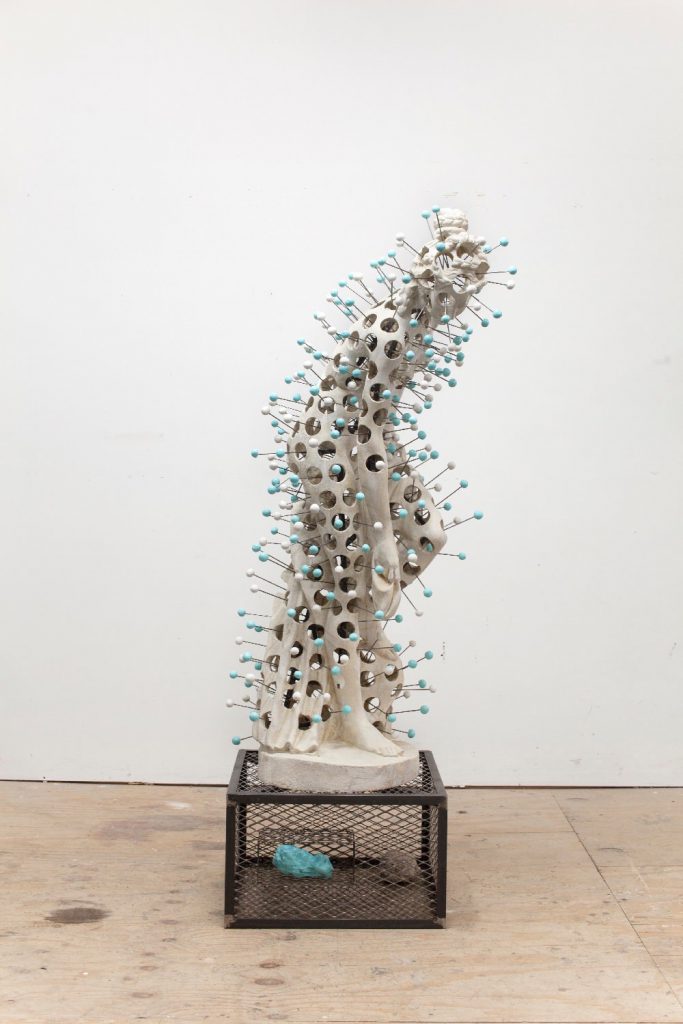
WL: Should sculptures, and all art objects in general, strive to last as long as possible? Or can pieces remain temporal while stilling hold the same grit and weight?
NVW: There’s no time. I think some of the best stuff falls apart. I mean when something dies, it feels like it occupies the same world that you occupy. If you can make a sculpture that’s always changing, or seems to be, that would be... better. You can keep it growing or have it erode.... There’s this one piece we did a long time ago where it said: “Every Thing Must Glow.” It was a big like steel thing and the panels were filled with plaster, but every time it moved, the plaster continued to fall out and pile up below. At a certain point, all the plaster would be on the ground. That kind of thing is way more intriguing to me because the work itself has a life that changes like we do.
WL: How do you go about looking for materials to work with and how does an artist avoid the pitfalls of poor material selection/poor appropriation?
NVW: I don’t know where it all started, but I think years ago, you know, I used to make paintings, and I used to draw and paint, then I started making the same painting over and over again. Okay, time for me to either quit or move on to something else. It has always been a push to try to make things more real and so sculpture seemed like it would be next. The work I have been doing started to tell a story and I can look at it and talk about it, like with the landscape paintings and the plexiglass boxes, they all start to be just about the world around me. I think artists have always done this. They make stuff from what’s around.
WL: I feel like your materials are very attuned to you. It is very intimate, you know?
NVW: Part of it is from my architecture background, I think, because those years in school were so much more informative than my years in art school. Art school was a fucking huge joke. I didn’t feel like I got a lot out of it. I had to un-learn a few things two years after school and then, well no one cared, which was the main thing. The schools treated the teachers like shit so they feel like they don’t need to contribute that much. And school always seemed like this amazing place in my mind where people come from all over the world to meet at the same place, at the same time. Amazing things should happen, but usually you show up to class, and it’s like here, here, here and like, “Uhhh, can we take a break?” “Can I get a cup of coffee?” And the teacher’s like “Yes, and I will join you in a couple minutes,” and I’m like what the fuck? What are we doing?" Oh, yeah, but the material question, I get bored real easily and tire of making the work I’ve been making, so I’m always looking for stuff. Some of the stuff is found like in the Monkey Wrench Gang Book. Dave Foreman, who is one of the founders of Earth First, wrote this nonfiction book, "The Field Guide to Monkeywrenching" where they took Edward Abbey’s book kind of literally and we were like let’s really fucking go blow up some bridges and burn some billboards down. This book is a home economics course in destruction and it flipped the way that I see materials, like everyday materials, because it is very domestic, it's origin. So he is taking all of these kinds of domestic materials that support a life of leisure, comfort, and wealth and he turns them and mixes them in a way that makes them totally destructive by mixing hair gel and chlorine for example. Chlorine from swimming pools which is kind of wealth and vacation and then hair gel that is about looking good. What I started to see through that book is that all these materials that provide a certain comfort in our lives, and all that comfort is just camouflage for the fucking horror underneath. I think that’s more true.
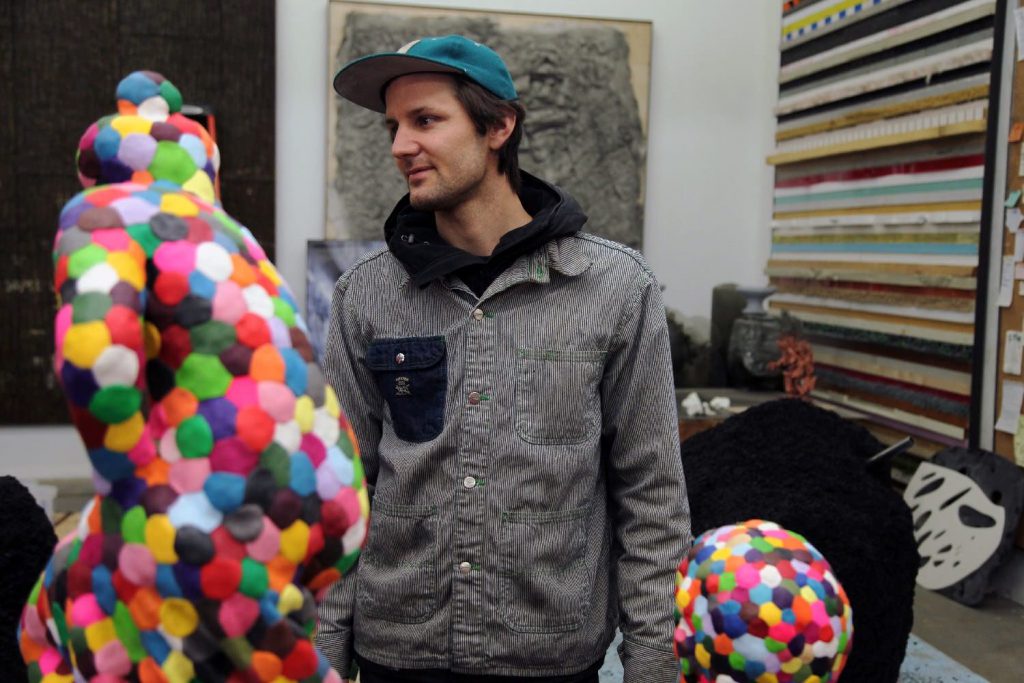
WJ: What motivated you to take a more 2D direction with the diptychs and triptychs in 2013?
NVW: With those, it was more about trying to make a more direct connection to landscape paintings. So at first it was the plexiglass boxes. In those boxes, it's just one material usually, they stack like strata, like you cut through the landscape in a way. All the colors relate very directly to the Hudson River School of painters, or landscape painters, especially the romantic ones because the colors are extremely vibrant. They cover the full spectrum, yellows, reds, oranges, everything, so in these plexiglass boxes, I was using Pine Sol, Mr. Clean, mouthwash; so you start to see the bright yellows and oranges that you could almost see the sunset over Donner Lake in the materials. So the colors were similar with those paintings, but the materials were totally opposite. Not trees anymore but like... asphalt. So then I took those plexiglass boxes and made these panels backed by plywood. We make the metal frames and usually that metal frame is the mold that we just dump the stuff into and just cut it and put it back in or leave or just see what happens next. Going into those was about getting to core of the history of landscape painting and just put it on the wall.
WJ: Finding out more about the context of your work is wild for me.
NVW: For me, like in architecture school, well let me just start by saying that in art school, you can do whatever and no one gives a shit. There are no ramifications, there’s no explanation. It’s just like “what is that?” “I don’t know...” Not everyone’s like that, but a lot of art works like that. I used to do that all the time. But, in architecture school, you’re putting your work on the wall every week and there’s a teacher sitting there and you’ve got to tell ‘em what they are looking at and it’s kind of painful because you are like “Here it is! You know what a building is! check it out!” and they are like “What, what the fuck?”
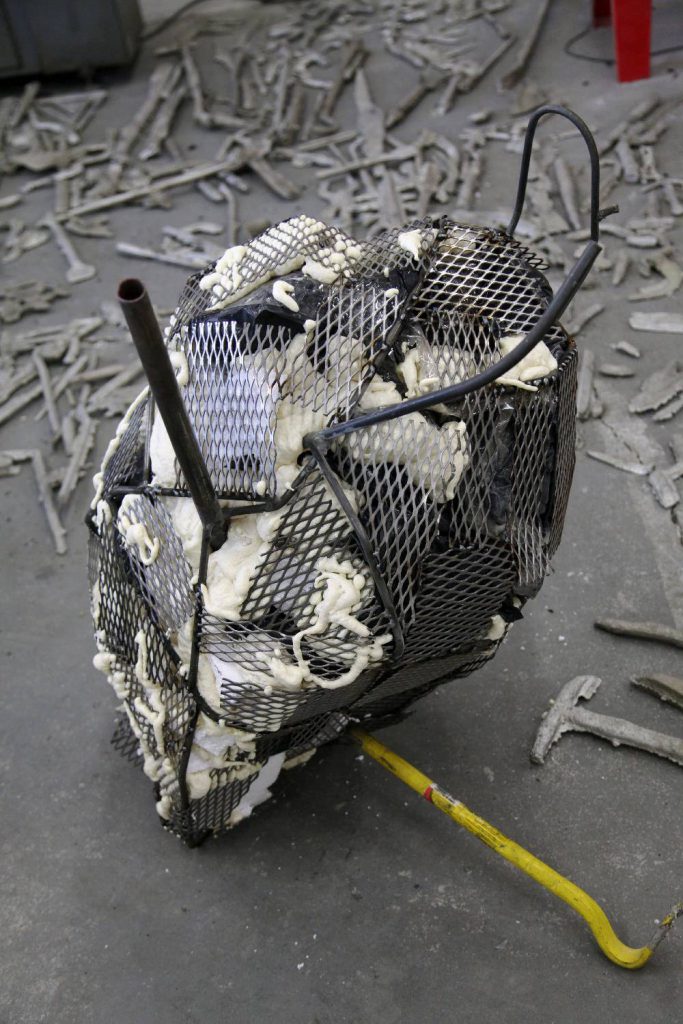
WJ: “What’s the function of this room?”
NVW: It’s usually about order, so you need to communicate the order to them. Some people can pick up on it right away which usually has something to do with the relationship with what you’ve done to the site or the surrounding environment. or you’re trying to do whatever. Well, you find out real quick how much bullshit you are full of when you have to explain this thing you don’t even know what it is to someone else. And they weren’t kind about it. They were like “What, are you fucking kidding me? You don’t even know what you're doing!”
WJ: Exactly. “Give me a point here!”
NVW: Yeah, so I’ve always felt like my actions need to justified. And that’s rooted, I think, in the architecture school and a lot of it in school, you are there to learn so if you can’t give someone information they could sink their teeth into, you’re not gonna get anything back. And so, you always want to get some feedback from the people. So, if you can give them something raw, they can be like “Oh! pfft” and then, they can give you some feedback and you can be like “Yes, cool. Thank you, I can move forward now.” Because if you just go [blah], then they go [blah], and you’re left going [blah].
WJ: Yea, but I think that conversation has been happening in art schools since the dawn of time actually.
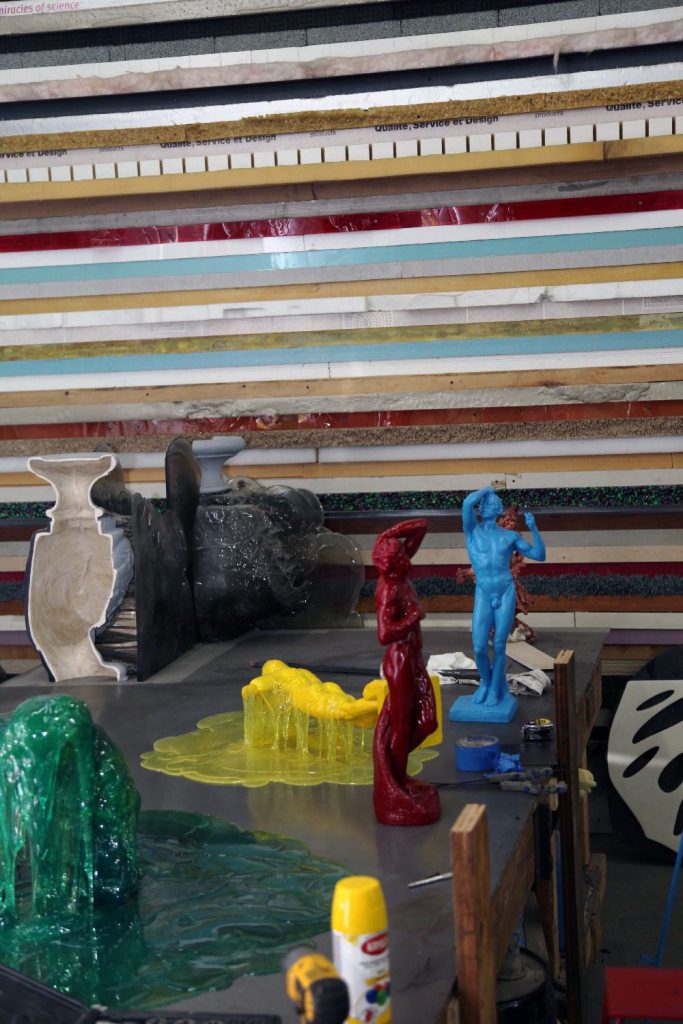
NVW: If you are given the opportunity to make something meaningful or meaningless, why not try meaningful? It is way harder, and I think it is way riskier and it’s scarier. [Both laugh]
WJ: So much scarier.
NVW: Because then, it’s like you have to take responsibility for it and a lot of artists don’t. People don’t like to do that because then you are held accountable and it’s like “Fuck, I don’t want to go on trial for this”, but why the fuck not?
WJ: You are supposed to stand up for your beliefs and what you intended your piece to be.
NVW: A lot of the work begins just based on a hunch that I might not be able to write it down or communicate to anyone. And I don’t like to do sketches because I like the work to be... “the work,” not the labor where you do the sketches which are “This is what I would like it to be” and then, “Let’s produce it.” It’s gotta be fun to make it. The scale of the work happens at 1:1. No models or anything.
WJ: You saying that would scare millions of people. “What?! You don’t sketch?!” I definitely sketch certain things, but I do feel, like you said, when you think of something randomly in my head just go with it.
NVW: You have to give yourself the freedom to do that or else you will get stuck in your patterns. So I try to give myself the freedom to try something new or try out a hunch or material or combination or whatever. And just run with it. And if it sucks, so fucking what?
WJ: Yea! At least you tried. You just gotta try it. There’s danger and stakes, but you gotta do it anyway. It seems that theory and art cannot be separated at this point in the art world and market. What do you feel about the concrete marriage of context and content within contemporary art?
NVW: I don’t really care what other people do. I’m gonna do what I’m gonna do. I don’t think one way should be criticized more than the other. I guess it’s about your preferences, I guess? Maybe that dodges it a bit, but I prefer to have some link to maybe history or something because like the archaeology thing: I’m not creating anything. I’m just discovering it, so I don’t know. Maybe say the question again. [Repeats question]
Yea, I don’t know. I don’t really think about it. [Both laugh] I think about it in my own work, but it’s more like I know what I’m about to do has probably been done in some form or another and if I could find that, I can add to the conversation. If I can’t find that, then I’m most likely just saying the same thing that someone else has said, over again. So if you can get to the root of things, you can help the conversation evolve and move forward rather than just fucking saying the same shit that’s already been said. It’s like, “We’re congratulating this again?! Fuck!”
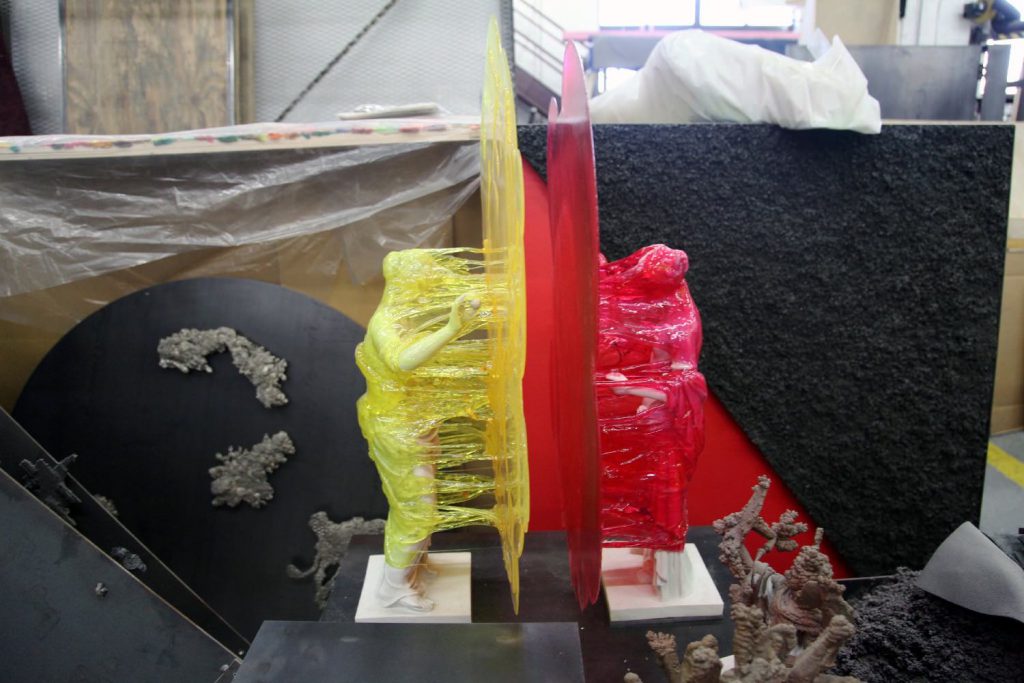
WJ: Thank you! I see some work and I’m like “come on, guys! This really...? If you just look at art for about... two seconds, you can see that this has been done. The point has made already and you have not said anything to add to that point. How do you find your historical influences?
NVW: The ancient Roman stuff came out of that I wanted to get to the root of why we live the way we live now and I thought, “Oh, let’s look at the romans” because they were some of the first people to build roads and buildings. And you start to see that a lot of the tools they used thousands of years ago are still in use today which is why things looks sort of similar, at least the gridded, rationalizing nature. And then you find all these crazy characters like a Haruspex who go to a site where they were going to build something, i.e. set up camp for warfare or put up a new building or new city. The Haruspex would collect animals and dissect them and inspect their entrails and if they were healthy, then that meant the land where the animal was found was deemed healthy and suitable for occupation. So there was a mirroring happening between what I’m made of and what the world around me is made of. So if you go to the natural world and you do that, it’s one thing, but to take that idea into a manmade world, then, you know, concrete, sheetrock, glass, steel... that should be me. Another footnote for my work is about returning to nature. I want to find out who I would be if outside the comforts of modern life. So let’s try to strip everything away and see what we are really made of and who we really are. So then, it’s like, “Okay, Thoreau lived in a cabin in the woods. We had the unabomber who lived in a cabin in the woods.” Both of them wanted to escape the modern amenities that life had to offer and so there has been certain projects that have gone down those paths where to understand myself maybe more fully, you try to look at yourself through the eyes of another person or maybe through their actions by carrying them out on your own or whatever.
WJ: Yea, I feel like a lot artists, especially young artists, want to know what is the “right path” or I always feel like there is never gonna be a clear path for anything you do.
NVW: Yea, this feeling won’t go away.
WJ: Exactly! You guys think it’s gonna get a little easier figuring out what you want to do? No.
NVW: Only if you start making compromises. [Laugh]
WJ: I’m not trying to do that. I only live once! What the hell! I hate using that phrase, but I could die at any moment, I’m about going with what I thought initially.
NVW: You gotta wing it. [Both laugh]
WJ: Yea, just hope it works out because it has to, right?
NVW: Yea, I mean, look at all the people that you admire. They are the ones that took the biggest risks. There’s not a single person who has been super conservative and just like “Fuck yea!” Artists are like the only fucking people who are allowed to and are expected to do radical things. Do what no one else is doing. You have permission.
WJ: Your career is built around that.
NVW: So when you see people just mimicking or kind of doing the same thing over and over again.... I think there’s merit to that. Certain people can just repeat. That’s just their work. That is what they do.
WJ: If you weren't an artist, what other career would you prefer to pursue?
NVW: Probably work at an Olive gGarden. [Both laugh] No, I always kid around with people because I always think this is gonna be over. There’s no guarantee and I spend every penny I make. I don’t save anything hoping the shit will hit the fan and I can just make motorcycles, and race RC cars and rock climb. Because I think it’s difficult. I think being an artist is difficult.
WJ: Yep, that’s from a dimension we have not all looked at... yet.
NVW: To keep that up for a long time is not easy. Takes a lot of fucking work. III